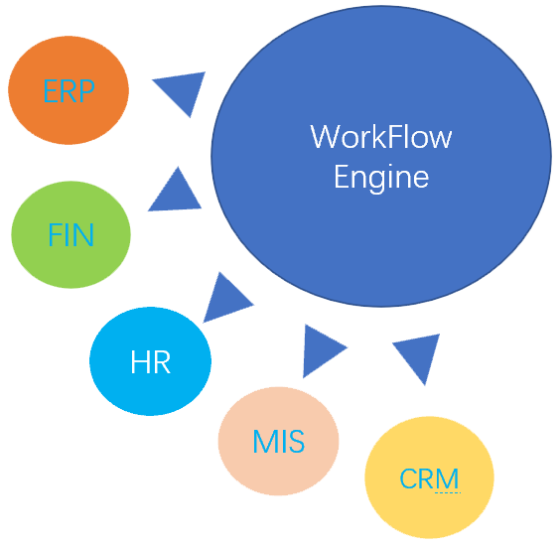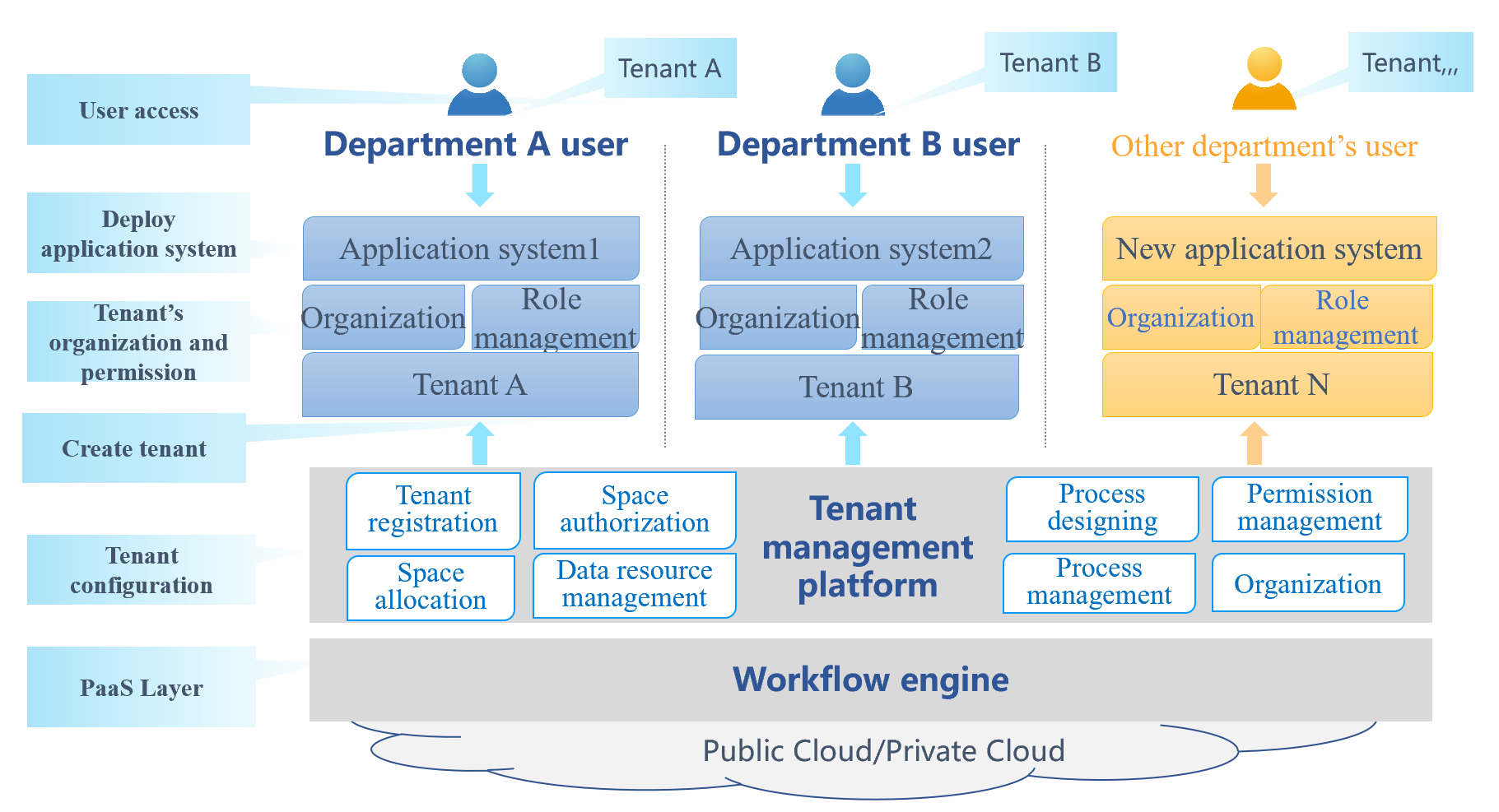SCENARIO
SCENARIO
Workflow Engine embedded into other systems

Embedding workflow engines into business management systems can enhance their process capabilities, reduce development costs, and shorten system implementation cycles. the integration interface is as follows:
- · Login authentication interface: single sign-on method to access the workflow engine system.
- · Organizational interface: organizational data in other systems, such as departments, personnel, roles, positions and other information can be read through this interface.
- · Permissions interface:control the permissions for process initiation and management through permission interfaces.
- · Form Interface: seamless integration with business data is achieved through the form interface.
Introduction to Deployment and Integration
 The steps of embedding workflow engine into business
management system is as follows:
The steps of embedding workflow engine into business
management system is as follows:
- · Create a database tablespace and user in the data where the the business management system is located and execute the workflow engine installation SQL script.
- · Copy the files under the workflow engine version project to the application published by the business management system.
- · Modify the target project configuration file according to instructions.
- · Configure the database connection pool.
- · Start the workflow engine, visit the license code generation page, send the machine code returned from the page to the account manager of HUIZHENG by mail, and copy the provided license file to the WEB-INF\license folder.
- · Implement the interface, including the organization interface, the designer verification interface, and implement the notification message sending interface, the process entry implementation class, the form data analysis interface, the database operation interface encapsulation, the extended function interface according to actual needs.
A Workflow Engine provide process services for multiple business systems
Workflow engines can be deployed in the service layer of private clouds to provide unified process services for multiple business systems, multiple tenant spaces can be established. In each tenant, the workflow engine, design tools, management tools and application tools of the workflow engine can be used independently. In tenants, software developers can use design tools to design and develop their own business processes and allocate virtual space for users to store process files.

 The step for establishing a process service tenant
is as
follows:
The step for establishing a process service tenant
is as
follows:
- Step 1. Open tenant space
- · Create new database in tenant initialization.
- · After the tenant initialization is completed, if the tenant needs to synchronize the organization, carry out the full amount of organization synchronization.
- Step 2. Customize business process
- · Customize the business process needed for the application in the tenant space (created in step one).
- · Customize the nodes, routing, and other configuration of the process.
- · Use process design tools to debug and release processes for application use.
- Step 3. Front-end organization integration
- · Organizational adaptation and initialization.
- · Single sign-on integration.
- Step 4. Invoke the process service interface
- · The workflow engine provides a RESTful framework interface, using HTTP as the communication protocol client to send requests to the service side through post 2, using json format data to the client response data.
- · Each user which access workflow engine need a secure accessToken, the user accessToken must be requested along with other parameters to the server, accessToken expiration time can be configured.
Multitenancy Technology
The workflow engine service is divided into multiple tenant spaces for management, the
engine services are provided to multiple applications at the same time, each application's
process management is independent in the tenant space.
Each tenant space uses an independent data source, which can connect to different tables of the same database to achieve logical isolation at the database level, or connect to different databases distributed in different locations to achieve physical isolation.
Each tenant space uses an independent data source, which can connect to different tables of the same database to achieve logical isolation at the database level, or connect to different databases distributed in different locations to achieve physical isolation.
Platforms Supported
- · CPU: Intel CPU、AMD CPU、RISC CPU、ARM CPU Server
- · Operating Systems: UNIX, Linux, Windows
- · Middleware: WebSphere、WebLogic、Tomcat、JBoss
- · Database: Oracle, DB2, SQL Server, MySql, PostgreSQL
- · Browser: IE, Google, Win Edge, Firefox